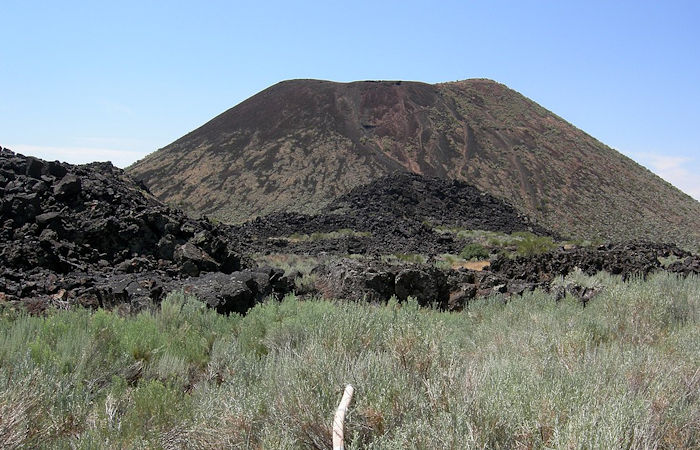Eddie Gonzales Jr. – MessageToEagle.com –We rely on climate models to predict the future, but models cannot be fully tested as climate observations rarely extend back more than 150 years. Understanding the Earth’s past climate history across a longer period gives us an invaluable opportunity to test climate models on longer timescales and reduce uncertainties in climate predictions.

Holocene cinder cone volcano on State Highway 18 near Veyo, Utah. Credit: Wilson44691 – Public Domain
In this context, changes in the average surface temperature of the Earth during the current interglacial Epoch, the Holocene (approximately the past 12,000 years), have been thoroughly debated over the past decades. Reconstructions of past temperature seem to indicate that global mean temperature showed a maximum around 6,000 years ago and has cooled until the onset of the current climate crisis during the industrial revolution.
Climate model simulations, on the other hand, suggest continuous warming since the start of the Holocene. In 2014, researchers named this major mismatch between models and past climate observations the “Holocene Temperature Conundrum.”
In this new study, scientists used the largest available database of past temperature reconstructions extending back 12,000 years to carefully investigate the geographic pattern of temperature change during the Holocene. Olivier Cartapanis and colleagues find that, contrary to previously thought, there is no globally synchronous warm period during the Holocene. Instead, the warmest temperatures are found at different times not only in different regions but also between the ocean and on land. This questions how meaningful comparisons of the global mean temperature between reconstructions and models actually are.
According to the lead author Olivier Cartapanis, “the results challenge the paradigm of a Holocene Thermal Maximum occurring at the same time worldwide.” And, while the warmest temperature was reached between 4,000 and 8,000 years ago in western Europe and northern America, the surface ocean temperature cooled since about 10,000 years ago at mid-high laтιтudes and remained stable in the tropics. The regional variability in the timing of maximum temperature suggests that high laтιтude insolation and ice extent played major roles in driving climate changes throughout the Holocene.
Lukas Jonkers, co-author of the study and researcher at the MARUM – Center for Marine Environmental Sciences in Bremen, Germany, says “Because ecosystems and people do not experience the mean temperature of the Earth, but are affected by regional and local changes in climate, models need to get the spatial and temporal patterns of climate change right in order to guide policy makers.”
Thus, the new work by Cartapanis and colleagues presents a clear target for climate models as the ability of climate model to reproduce Holocene climate variations in space and time, will increase confidence in their regional projections of future climate change.
The study was published in Nature
Written by Eddie Gonzales Jr. – AncientPages.com – MessageToEagle.com Staff





